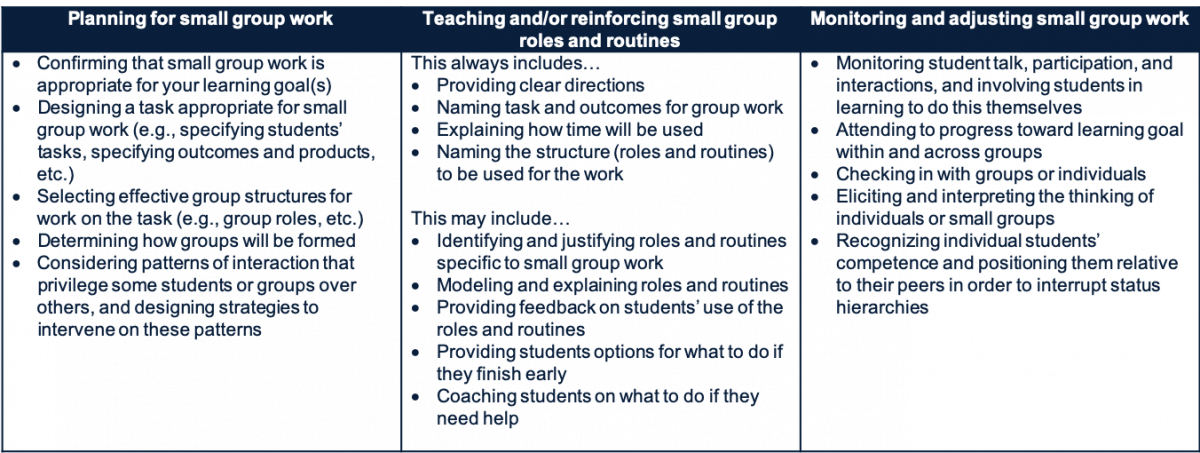What is setting up and managing small group work?
Teachers use small group work when the learning goals profit from interaction and collaboration among students. To do this, they choose tasks that require and foster collaborative work, provide clear directions that enable groups to work independently, and hold students accountable for collective and individual learning. Teachers use their own time strategically, deliberately choosing which groups to work with, when, and on what. Teachers work to ensure students are positioned as competent among their peers, that patterns of interaction are respectful, and that the collective work of the group uses the strengths of and benefits each student.
How does setting up and managing small group work advance justice?
During small group work, students’ relationships, identities, and perceptions of one another affect their learning opportunities. In particular, biases related to race, gender, and other social identities, as well as stereotypes about subject matter competence, are all part of small group dynamics. Teachers must work carefully to ensure that group tasks and structures allow students to see one another as capable contributors to their learning. Teachers must actively support the interruption of problematic discourse patterns and interactions.
What are the elements of the practice?
The table below breaks down work that teachers do when they are setting up and managing small group work. This breakdown, or decomposition, helps teacher educators to break down the practice into a set of parts that can be observed and practiced.
